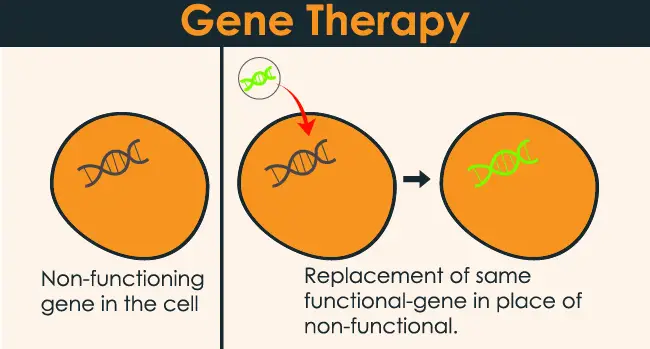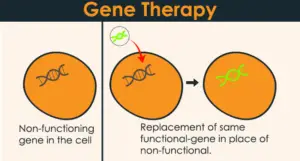
Gene Therapy , A Quick and Easy Guide on
What is gene therapy: It is a technique in which a particular DNA sequence is used as a drug to prevent or cure a genetic disease. Usually, the technique uses domesticated viruses to correct defective genes. It is a medical technology in which DNA is directly used as a pharmaceutical substance.
However, with this technique, the genes or fragments of these are inserted into the human body for the purpose of preventing, treating, or treating a disease. Gene therapy is currently being studied in clinical trials as a new method consisting in the use of genes for the treatment or prevention of diseases.

What Is the History of gene therapy?
History of gene therapy: Its concept was introduced during the 1960s and 1970s. Friedman and Roblin in 1972 published an article in the Journal of Science under the heading “Gene therapy for human genetic diseases?”. In 1990, the first patient treated with it.
While in 2003 the University of California succeeded in transferring genes in neurons of the brain. In December 2008, mouse tests for sickle cell anemia therapy were successfully completed. In November 2017, California hosted the world’s first procedure for “editing” the adult genome right inside his body.
What are the Vectors in gene therapy?
Vectors in gene therapy: Viral vectors are the most efficient systems for gene transfer since they are capable of infecting a high proportion of target cells and are unable to replicate or cause disease in the treated patient. Adenovirus vector is one of the most commonly used viral vectors for it.
A good vector must at least:
- Allow the insertion of genetic material.
- Lack of elements that induce an immune response.
- Be reproducible and stable.
- To be able to regulate the expression of the therapeutic gene.
- Be harmless or that its possible side effects are minimal.
- Recognize and act on specific cells.
What are the types and examples of gene therapy?
Types:
There are two types.
- Germline gene therapy: germ cells, i.e sperm or eggs, are usually modified and integrated into the genome based on functional genes. Therefore, this change after treatment can be inherited and passed on to future generations. This new method, in theory, should be very effective against genetic diseases.
- Somatic gene therapy: the therapeutic gene is transferred to the patient’s somatic cells. Any genetic modification and the resulting effect will not be inherited by the patient’s children or future generations. This is mainly related to the nature and function of somatic cells.
Example
Example: Producing therapeutic cells by gene therapy, in the case of CAR T cells in the field of cancer: T lymphocytes from patients with B leukemia are removed and genetically alter to arm them with a chimeric receptor (CAR). This receptor recognizes the CD19 antigen present on malignant cells.
What is gene therapy used for and its benefits?
Uses:
Gene therapy used for the treatment of some genetic disorders, various types of cancer, and some infectious diseases, including SCID and AIDS. Major non-genetic diseases such as Alzheimer’s disease, Parkinson’s disease, diabetes, and macular degeneration will be the second half of the development of it.
In addition, it may also be used to extend human lifespan or delay aging.
Benefits:
The benefits of gene therapy are as follows:
- With the help of it, modern medicine is trying to find an approach to treating cancer, diseases of the cardiovascular system, skin, infections, including HIV.
- It can increase survival, decrease morbidity, and in some cases end disease progression.
- It can also consider as one of the methods of immunization.
- It’s potential to prevent subsequent long-term morbidity with a single treatment.
- It can offer the quality of life benefits, by reducing or eliminating pain, by providing a sense of well-being for patients, and by avoiding dependence on chronic treatment.
However, the durability of these therapies is still theoretical, and additional time and studies are required to evaluate it.
What are Vectors in biology?
Vectors in Biology are any gene carrying vehicles. In the micro-biological approaches, we have a target DNA that we want to insert into the host cell, and that host cell can be bacteria, yeast, or could be something else. The thing here to understand is that the target DNA cannot enter the host cell itself.
In order to insert that DNA fragment into the host cell, we need a vehicle or a system that can do the job. This vehicle or a system we choose is called as a vector in biology.
Vector is actually a self-replicating molecule, most often it is a plasmid. There are many types of vectors in biology as mentioned above ‘viral vectors’ which are used in the gene therapy technique.
Sure Laura! 🙂
Thank You Jessica!